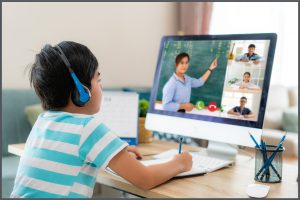The new academic year is looking very different from last year. Face masks and virtual coffees are now a normal part of life, and online learning has risen dramatically. But not everything has to be different – you can always count on KnE’s monthly round up of top reads!
September has always been a time of new beginnings and anticipation – especially for anyone involved in education. It is more important than ever to continue reading, learning and staying motivated. At KnE Publishing, we are always looking for our next great read – so what were the most popular articles to read this past month?
1. Online Gaming: Impact on the Academic Performance and Social Behavior of the Students in Polytechnic University at the Philippines Laboratory High School
This article from the KnE Social Sciences series assesses the impact of online gaming on the academic performance and social behaviour of students in a university in the Philippines. Is there a significant link between online gaming and academic performance?
Continue reading here.
2. Spiral Progression Approach in Teaching Science: A Case Study
The Philippine educational system underwent several developmental stages before it reached the current educational system. This article from the KnE Social Sciences series aims to conduct a formative assessment on the implementation of the spiral progression approach in teaching science in the Philippines.
Continue reading here.
3. Pigments Characterisation of Macroalgae in Drini Beach
This study from the KnE Life Sciences series aims to identify and quantify the pigment content of macroalgae at Drini Beach. What is the correlation between pigment content and absorption peak?
Continue reading here.
4. Generative Design: What it is? How is it Being Used? Why it’s a Game Changer!
Technology is changing the way we design the products of the future. This study from the KnE Engineering series discusses generative design technology, how it functions, how it is being used and why it is changing the way we design the next generation of things.
Continue reading here.
5. Conjunctivitis: A Systematic Review
This review from the Journal of Ophthalmic and Vision Research summarises the key findings from scientific literature surrounding conjunctivitis. How is conjunctivitis diagnosed? How do you distinguish bacterial conjunctivitis from viral conjunctivitis?
Continue reading here.
6. Integrating Gender and Development (GAD) in the Classroom: The Case of Lucsuhin National High School, Department of Education-Philippines
This study from the KnE Social Sciences series assesses the effects of gender-based differentiated instruction on the academic performance of Grade 8 students in a school in the Philippines. What impact does GAD instruction have on academic performance and test scores?
Continue reading here.
7. Media Engagement and Ethnic Identity: The Case of the Aeta Ambala of Pastolan Village
This article from the KnE Social Sciences series explores how different media affects the indigenous group, Aeta Ambala, and how they perceive their own ethnic identity. How do different media forms cultivate opinions?
Continue reading here.
8. Coping Mechanism and Academic Performance Among Filipino Undergraduate Students
College can be a stressful time for many students. This study from the KnE Social Sciences series explores the coping mechanisms of a group of students and how well they respond to stressful situations. Is there a significant relationship between student’s coping mechanism and academic performance?
Continue reading here.
9. Effect of Embryo Transfer Depth on IVF/ICSI Outcomes: A Randomised Clinical Trial
Implantation failure remains a significant issue in most infertile couples receiving embryo transfer treatments. This study from the International Journal of Reproductive BioMedicine assesses the effect of two different embryo transfer sites on the outcomes of IVF/ICSI cycles.
Continue reading here.
10. Analysis of Utilisation of Gadgets as Effective Learning Media in Innovation Education to improve Student Learning Achievement
There are various educational benefits of mobile phone technologies. This article from the KnE Social Sciences series investigates whether mobile phones can have a positive impact on student learning.
Continue reading here.
For more thought-provoking research visit the KnE Publishing platform: www.knepublishing.com













